Just back from our Hokkaido Landscape Photography Tour for 2016, this week we start a three part travelogue series to walk you through the tour with a total of 36 images.
We start the tour with with an early flight to Hokkaido, following a night at a hotel at the Haneda airport, where we have a pre-tour dinner and start to get to know each other. Five of the participants of this tour were on my Winter Wonderland wildlife tours last year, so it was lovely to see those people again, and of course it’s always nice to meet the first time participants on any of my tours. I recorded a message from each of them at the end of the tour, that we’ll listen to at the end of part three of this series.
Once in Hokkaido, it’s a relatively short drive to our first location, in the rolling hills of Biei, where the photography is centered around a tree that I’ve been in love with since my first Hokkaido tour back in 2008. For the real long-time listeners among you, you’ll know that we used to visit Biei on the landscape leg of my tours before I decided to cut away the landscape leg and concentrate on wildlife, until I started this landscape specific tour last year that is. Now we spend the first three days in Biei before heading over to the west coast of the island then around the northern-most tip, and back down the east coast during our 12 day itinerary.
As you can see from this photo (below) we had a somewhat dramatic sky on this first morning, with the sun poking through the cloud enough at time to give us these sun’s rays amongst the heavy clouds. For this image I was a way down the hill to include the brow of another hill in front of the tree to give the scene a little more context, and also just because I like the shape. Despite the sun being out, if you look closely at the image you’ll also see snow in the air, which I think adds a nice additional dimension.
My camera settings for this shot were f/14 for a 1/400 of a second at ISO 100, and a focal length of 170mm, so you can tell I was a little distance away from the tree. I was shooting with two Canon EOS 5Ds R bodies on this trip, and three lenses; the Canon EF 11-24mm f/4L lens, the EF 24-70mm f/2.8L II lens and the EF 100-400mm f/4.5-5.6L IS II lens.
This kit was perfect for this trip, giving me a backup body in case one failed, but also enabling me to use two lenses attached to cameras at the same time. I will change lenses in most conditions, so that doesn’t really bother me, but it generally just speeds up my shooting workflow to be able to simply reach for a different camera for another focal length rather than changing lenses.
After working the area around my favorite tree for a few hours, we went for lunch, and then visited another location where I know there are a number of stands of trees that look beautiful on heavily overcast or snowy days, and you can see one of them in this photo (below).
The settings for this photo were f/14, 1/30 of a second exposure at ISO 100, and a focal length of 176mm.
On last years trip, it was sunny for most of the first two days, and that can seriously limit our shooting options, because the snow becomes too contrasty and sky is clear, giving us too much background. In my mind, the locations that I guide my group to only really come to life when it’s overcast, and when it actually starts snowing, it changes the scene again, as we’ll see.
It was cloudy or snowing for most of our time during this trip, which was really nice, although it was not snowing for this particular image. I often feel as though the shots of trees with heavy snow look like pencil sketches, but this image, converted to black and white in Silver Efex Pro feels more like a pen drawing to me, which I also like.
Just along the road from the last scene is the tree that we see in this next photo (below) sitting nicely on the brow of a hill, with some “Sasa” bamboo leaves poking through the snow, which I feel adds a nice added element too. My final selection of images from this tour is 101 images, and I actually have two more shots of this tree left in the set, where there is some really nice light coming over the hill, but the tree is on the right side of the frame. For now, I have chosen this left position as that’s supposed to be more comfortable for left to right readers to view, although I think I actually prefer the other composition. I’ll think about flipping one of them too maybe.
I shot this at f/14, 1/25 of a second at ISO 100, with a focal length of 188mm. You can probably see a pattern forming here, whereas the 100-400mm lens or a 70-200mm lens are really useful for this leg of the trip, although my other lenses do get more use as we progress.
The following morning with the promise of different light, we revisited the tree that we went to first on day one. In this photo (below) you can see that the dawn light and overcast sky enables us to record the detail of this tree, rather than having it fall almost into silhouette, as it does in the first photo. Many of the trees in the Biei area have names, although I’ve never found a name for this tree on any map, so I selfishly call it Martin’s tree. I’m OK with that, because I have not found anyone else producing images of this specific tree, and definitely not as long as I have been doing.
My settings for this image were f/14, 1/4 of a second, at ISO 100, this time at 255mm, a little longer that I would have been able to shoot with my 70-200mm, which I brought with me last year. You’ll probably have noticed too noticed that I shoot a lot in f/14. This is to get a good depth of field before diffraction starts to kick in. I know some people profess to shoot at wider apertures, but the image quality is totally there at f/14, so I use that aperture a lot.
There was a time when the sky started to go pink through the clouds as the sun rose during this dawn shoot, and I toyed with the idea of leaving this next photo of “my” tree (below) in color, but in the end, I gave in to the temptation of converting it to black and white like the rest. I just love seeing most of the scenery that we capture on this tour in black and white. To me it just so matches the subject matter.
This was also shot at f/14, for 1/13 of a second this time, at ISO 100 and a focal length of 135mm.
There is another spot that I like to take the group, where we have to walk a little bit down the road from a place where we can stop our bus, to a location where there is a beautiful tree on hill, as we see in this photo (below). This is actually the same tree that I’m using as the marketing image for the 2017 tour at the moment, although I might change that later as I live with this year’s work for a while.
This year it was snowing quite heavily when we photographed this tree, so this has become almost like the pencil drawing that I like, but the snow was coming straight for us, not across the scene, so I think for this subject, I prefer the clarity of last year’s image. We can’t control when it snows of course, and although we can try to chase the subjects that look best in snow, it’s sometimes difficult to time it just right. I still really like the subtle difference in tones between the line of the hill here, just above the fence posts, and the ever so slightly lighter sky. This was shot at f/11, as I needed a slightly faster shutter speed to overcome some nasty wind. The ISO was left at 100 though, and the focal length was 135mm.
While it was still snowing a little, we went back to the few stands of trees before going to lunch, and I made this photograph (below). This is almost a replica of last year’s shot of these trees, but it was snowing much heavier last year, making it look more like a pencil drawing, but I still like the structure in this year’s version, and there is still snow crossing the front of the trees adding that additional dimension of being able to see the air.
Remember as you view these images, if you open up your browser window much wider than the post width, and click on the images, you can view them much larger. They will automatically advance to the next image too, but you can use your keyboard arrow keys or mouse to move back and forth, or place your mouse over the image to stop the slideshow from progressing. I shot this at 1/60 of a second at f/14, ISO 100 at 100mm.
After lunch, I had our bus driver drop us off at the top of a hill on the way back to the same areas that we shot the last image, and he parked our bus in a car park that the group all now knew, and we walked back to it through the hills for about a mile. One of the reasons I wanted to do this was to photograph the tree in the next image (below).
Tree in Hollow
This tree was sitting in a slight hollow, which dissects its shadow a little, and I found that quite pleasing. Again, I also really enjoy it when there is only a subtle difference in tone between the color of the snow and the sky. I was also interested to find that I processed a number of my images from this trip in Lightroom, instead of Silver Efex Pro. I still love the ease of Silver Efex, but for some of these images I found that the control over the black and white conversation that I have in Lightroom was enough, and that’s perhaps a first for me. I do prefer to keep my images in their original raw format too when possible, so using Lightroom for black and white conversion enables me to do that, which is an added bonus.
This was shot at f/14 for a 1/10 of a second at ISO 100, and a focal length of 400mm. This is of course the long end of my 100-400mm, so you can tell how far away this tree was. The 70-200mm lens works as your long lens for this trip, but last year I found myself using my extender a lot, and figured that I could live without the gap of 30mm between my 24-70mm and the 100-400mm lenses, in exchange for this extra reach, and I was happy with my decision.
As we continued to walk back along the road to where our bus would be parked, I initially walked straight past this next photograph, but luckily I’m in the habit of looking behind myself regularly as I look for images. As I looked back at this point, this graphic composition of the fanned out grasses caught my eye immediately (below).
Once again, this was shot at f/14, for 1/6 of a second at ISO 100, and a focal length of 227mm. I could have used a shallower depth of field here, with a wider aperture of course, but the grass was still, so there was really no need to change my settings so I just rolled with it.
This next image (below) actually made me a couple of minutes late back to the bus, but usually, the mountains in the distance to the right of this scene make it too messy for a really minimalist shot, but the snow and reduced visibility gave me the entire seventeen trees in this row, so I couldn’t resist running down to this spot for one last frame before I jumped on the bus to head back to the hotel at the end of day two.
I shot this at f/11 for a longer 6 second exposure, without a neutral density filter, so you can tell that it was really quite dark at the end of the day now, and the focal length was 25mm. This is another Lightroom conversion, as I just liked the subtle tones in the shadows under the trees a little better in this version.
We had a relatively steady start on day three, as we were driving a good distance from the hotel, so we had breakfast before we left. We drove around to the ski lift station at Mount Asahi, the tallest mountain in Hokkaido, where we walked a little way up the ski slopes, keeping out of the way of the skiers of course, as we looked for photographs like this one (below), which is absolute chaos, I know.
It’s actually the chaos that attracted me to this subject. I love visiting this spot, because it can present some very challenging composition opportunities, but often some extraordinarily beautiful scenes. I’m not sure if this falls into the latter category, for it certainly was a challenge to compose though. I found the foreground tree, and just love the detail, but when I framed it up, the background was just chaotic. I thought about using a wide aperture to reduce the depth of field, but I actually started to really like this look, with everything just all jumbled up together, so this became my image. It was shot at f/11 for 1/30 of a second, ISO 100 at 70mm, the long end of my 24-70mm lens.
Just along from the last image, I found this scene, that has probably become one of my favorite images of the trip (below). I felt this easier to compose than the last image, although there was a lot of thought that went into this. Firstly, the cable car cables run almost half way into the scene, and there was a large pillar to support the cables, so I moved into a position where the pillar would be behind a tree, leaving me only the cables to clone out.
I also wanted the twigs from that small bush in the foreground not to overlap with the other two bushes in the distance behind it, so I adjusted for that too. Finally, I tweaked my framing so that I cut off the trees at each side in a pleasing place.
Also, note that because I expose to the right, my original of this is almost pure white, with pale grey trees, but I decided to process this with a somewhat classic look, which I think suits the scene. For my black and white snow scenes, I pretty much always now turn on Enable Profile Corrections under the Profile tab of the Lens Corrections panel in Lightroom. This removes both lens distortion and vignetting from an image.
I sometimes only remove the vignette, but generally both. The reason I do this, is to stop the corners getting really dark during the black and white conversion, but as you can see in this image, I chose to leave the vignette there. I did not use the Lens Corrections. I could have corrected it and then added my own vignette later, but something about this image just beckoned me to leave it with this classic feel with a real lens vignette.
My settings for this image were, you guessed it, f/14, 1/25 of a second at ISO 100, and a focal length of 30mm, again with my 24-70mm lens.
So, that’s our twelve images for today, and we’ll pick up the trail next week with a photograph from the foothills of Mount Asahi from a shoot on our way back to the hotel later in the day.
Hokkaido Landscape Photography Adventure 2017
Before we finish, I just wanted to quickly mention that we have now started taking bookings for the 2017 Hokkaido Winter Landscape Photography Adventure, from January 8 to the 20th, 2017. Hokkaido is the northern-most island of Japan, and as you might have noticed, it is the minimalist winter landscape photographer’s dream. This will be our third year running a dedicated landscape tour in Hokkaido, and it’s evolving into something very special that I’m extremely proud of. For details and to book your place, visit the tour page at https://mbp.ac/hlpa
Show Notes
For details of the 2017 Hokkaido Landscape Photograph Adventure visit the tour page here: https://mbp.ac/hlpa
Subscribe in iTunes for Enhanced Podcasts delivered automatically to your computer.
Download this Podcast in MP3 format (Audio Only).
Download this Podcast in Enhanced Podcast M4A format. This requires Apple iTunes or Quicktime to view/listen.


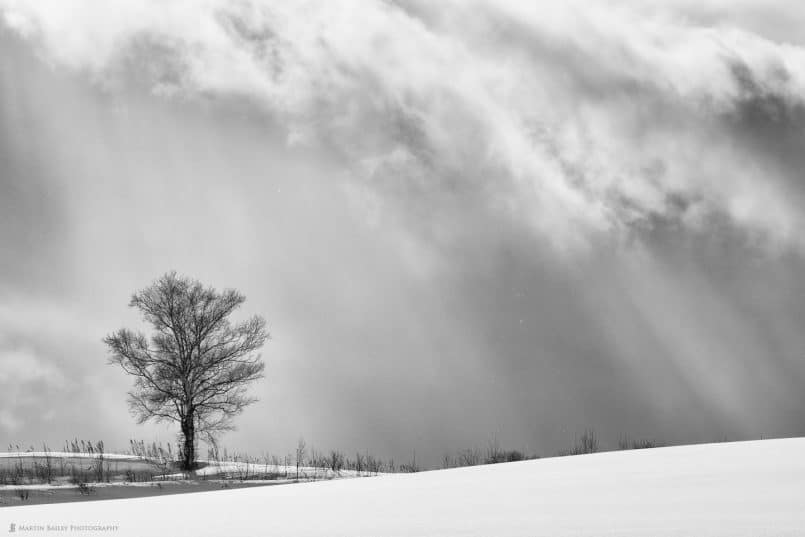

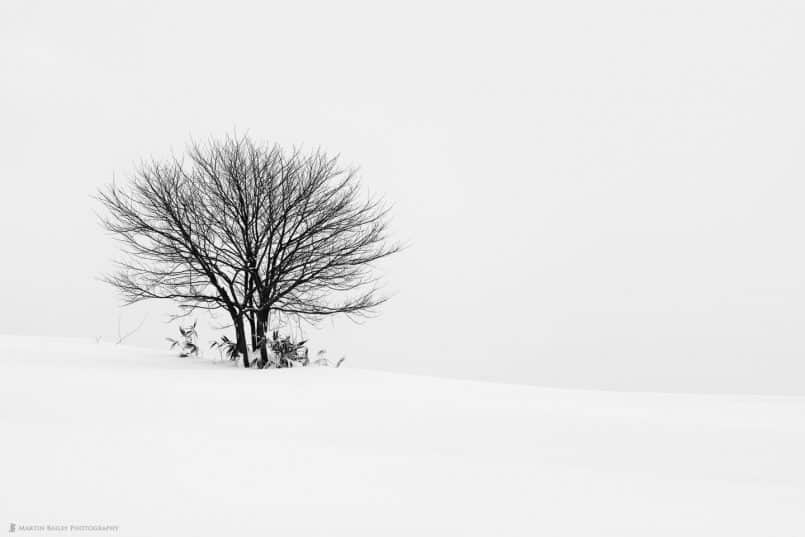
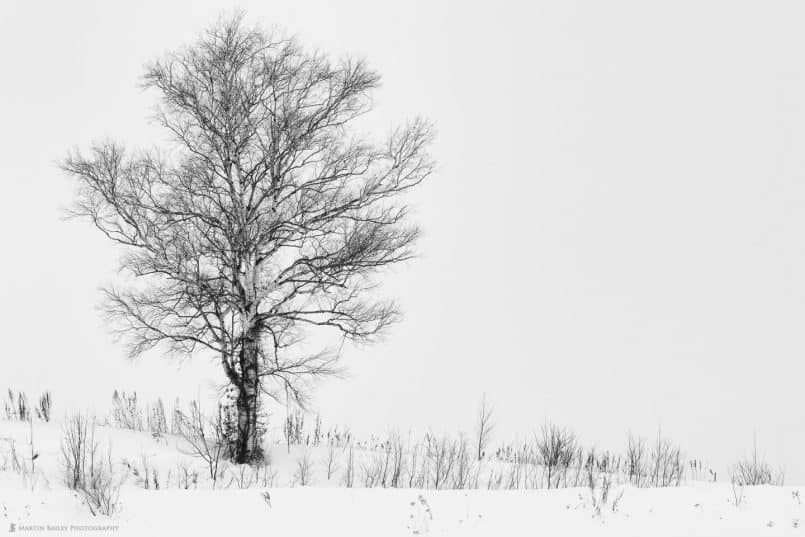
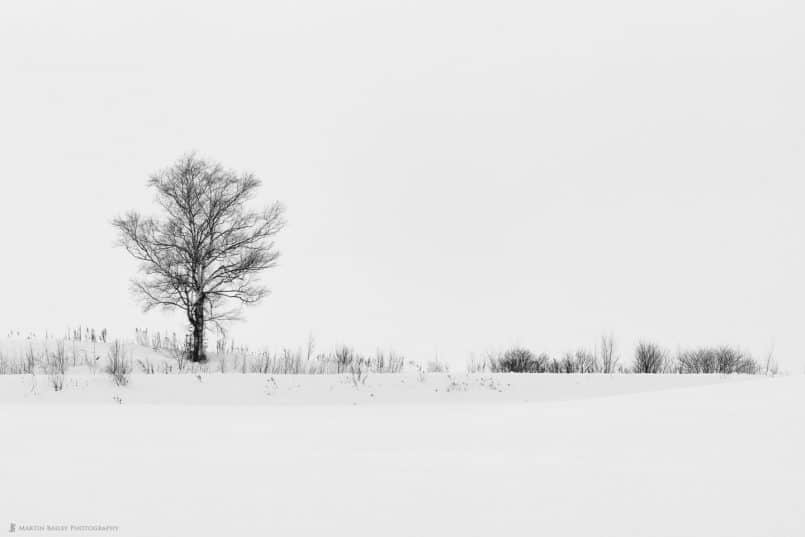
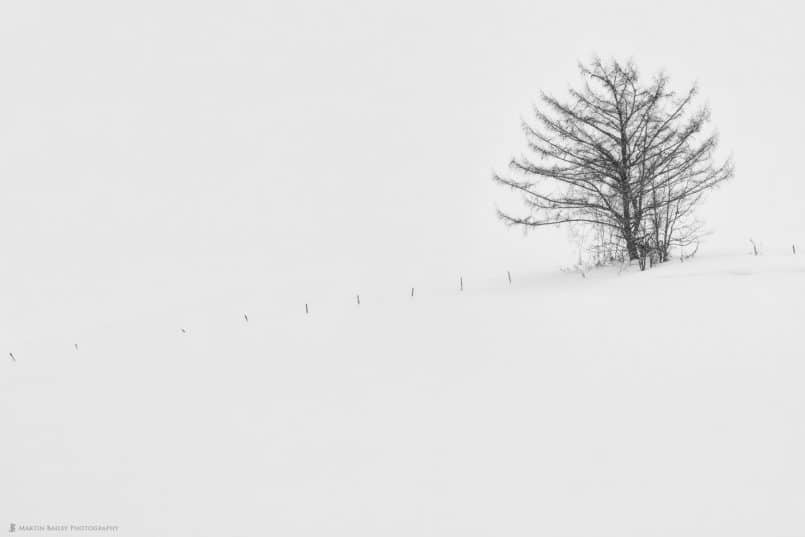
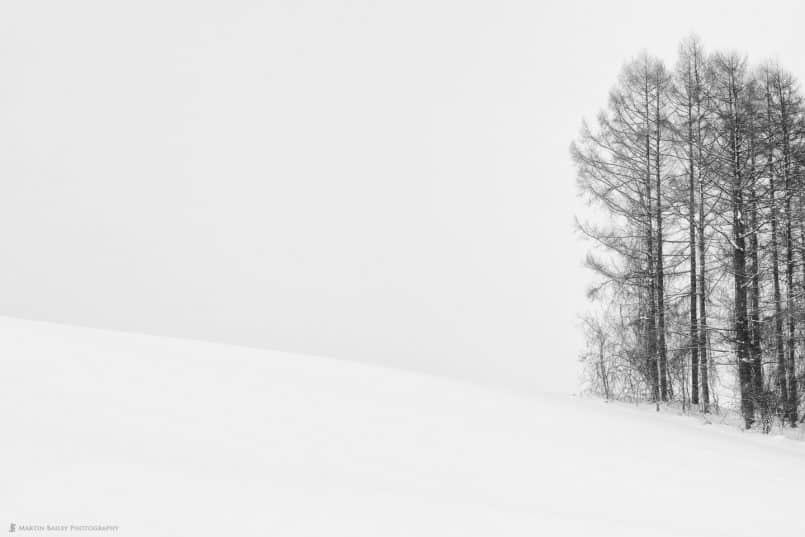
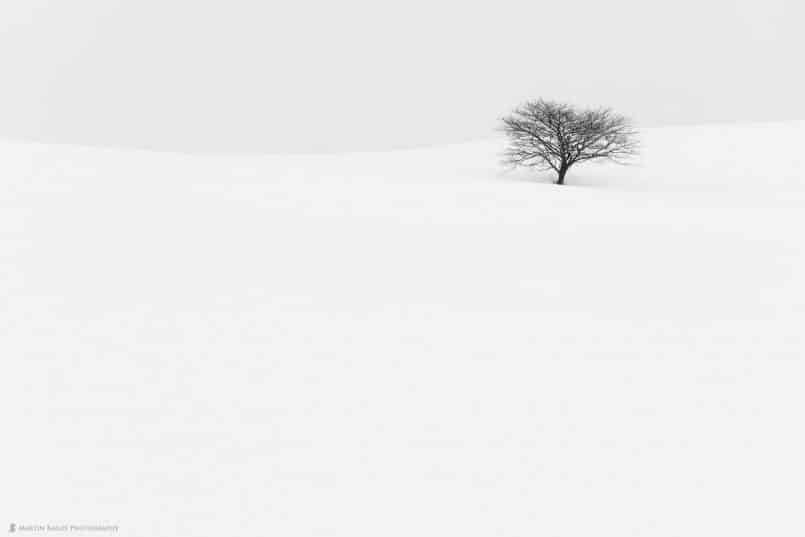
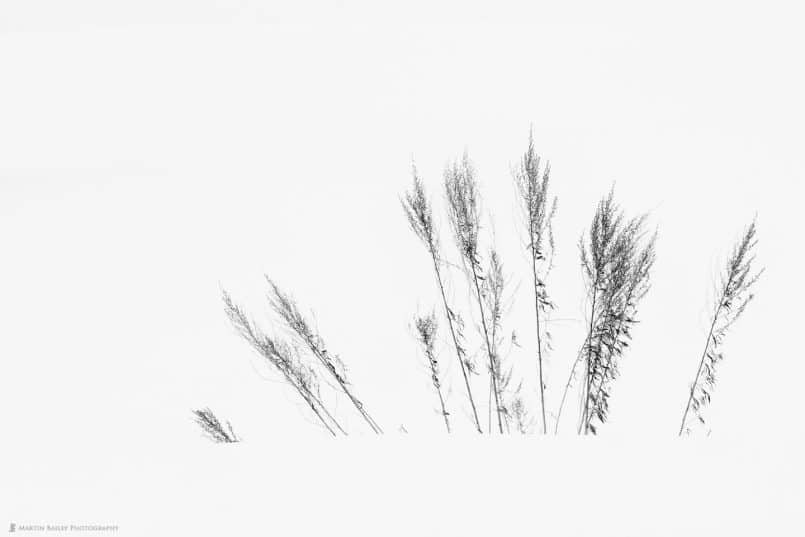
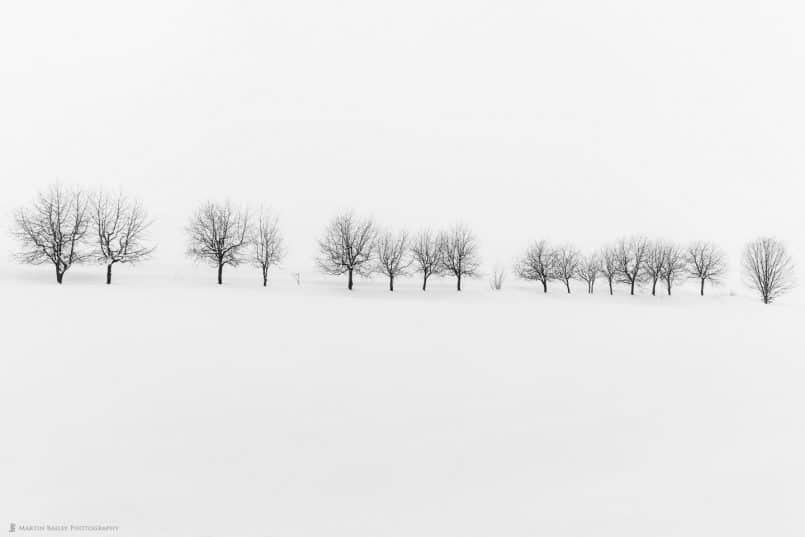
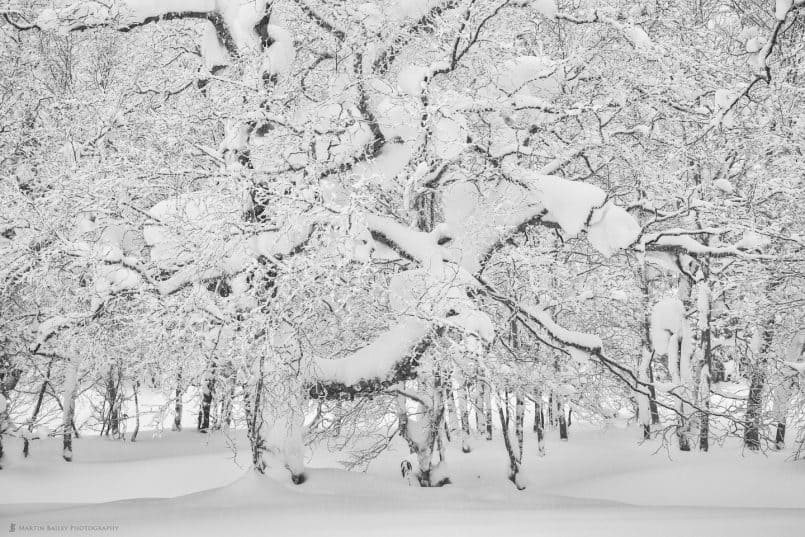
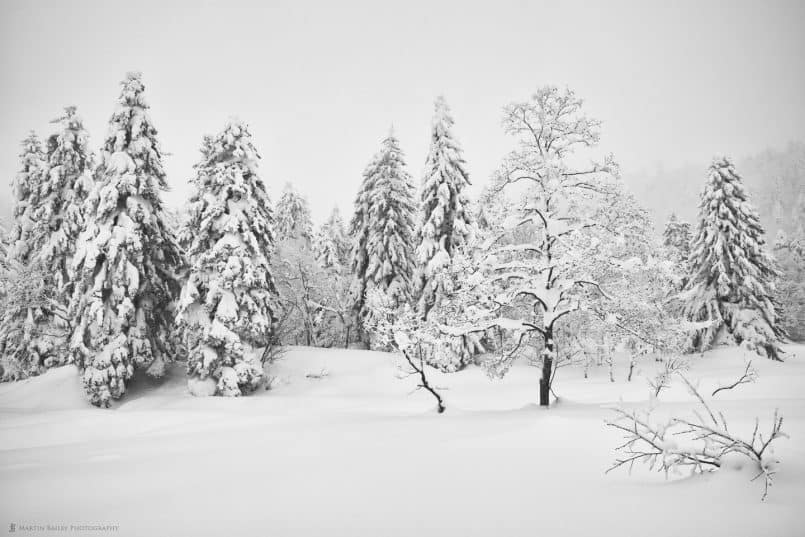
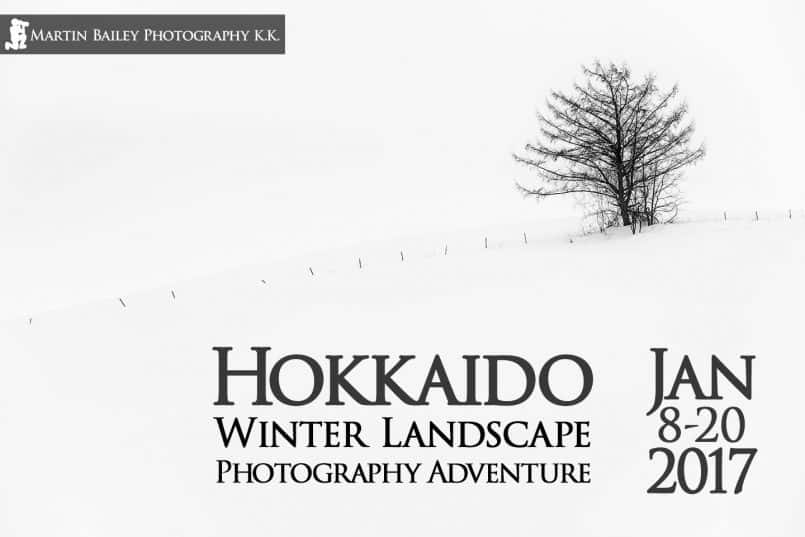

The “Mount Asahi Trees” shot is breathtaking. Somehow the mix of tree types, including the half submerged chap on the lower left, all unified by the sugar-powder snow makes it feel like some fantastical dessert plate at a Michellin starred restaurant. Totally love it.
Thanks! I’m really pleased you like that one. It’s one of my favorites too. 🙂
Loved “Tree in Hollow” I personally would have went for a bit more sky but that’s me. 🙂 I would be lying if I said I wasn’t jealous of all this snow I see in your pictures. The little snow we have had in Edmonton is already half melted.
Whoops! I missed this comment at the time. Sorry Charlie.
I’m pleased you enjoyed these shots. The balance of land and sky is often quite a personal decision. 🙂
I miss the snow, especially now I’m having to use the air conditioning to stop myself from melting now here in Tokyo. 🙂
Hi Martin. You are probably on your 2017 Hokkaido Tour right now. Love your snow shots from 2016. It’s a shame we have missed your tour for this year. We are thinking of heading over that way (Asahikawa) in early March. Is there still good snow there then or is it best in Jan? Happy shooting and keep warm.
Hi Peter,
It’s hard to say. Jan is definitely better than March, though there will still be snow. The earlier in March the better though.
Cheers,
Martin.